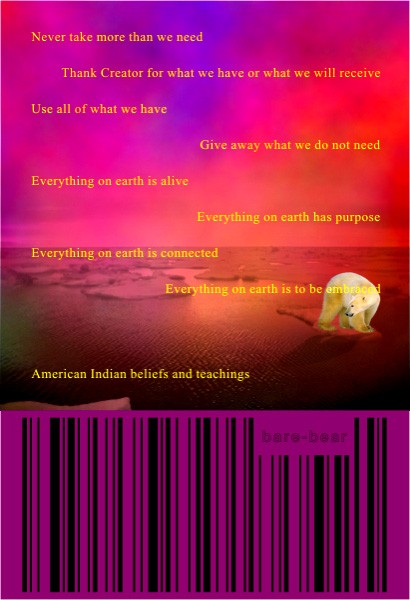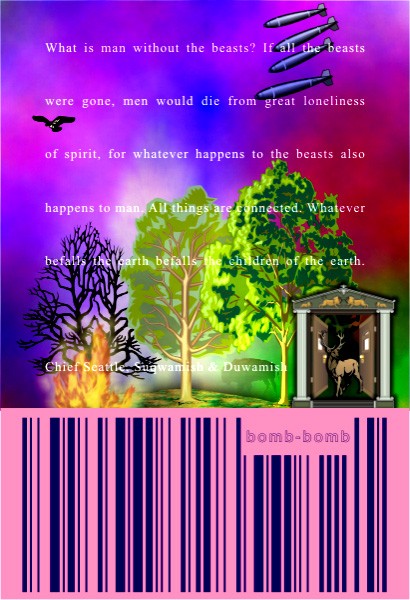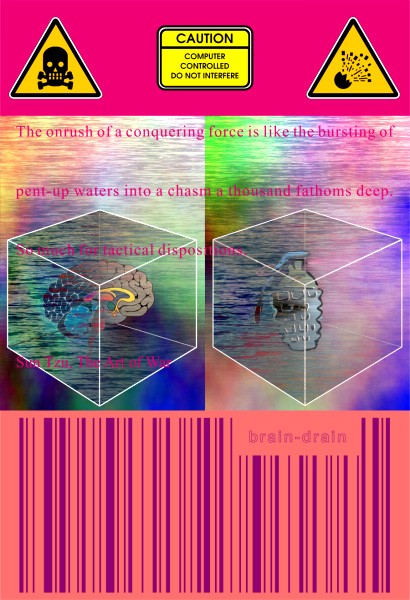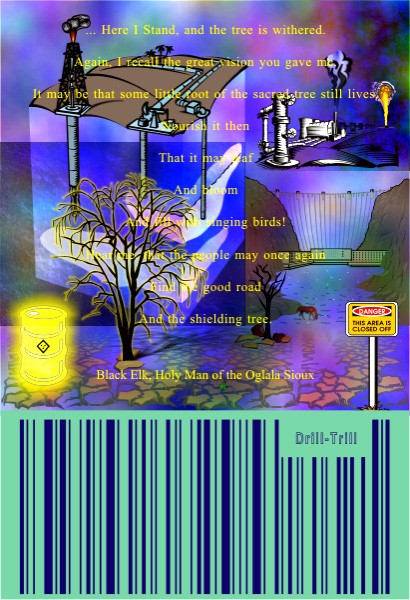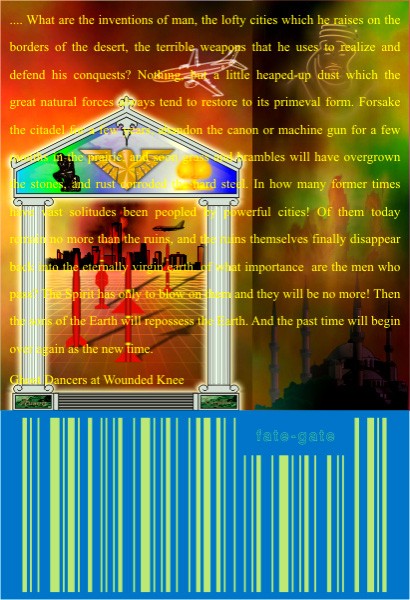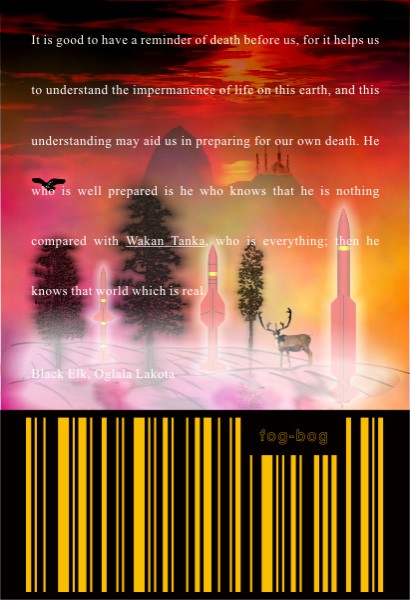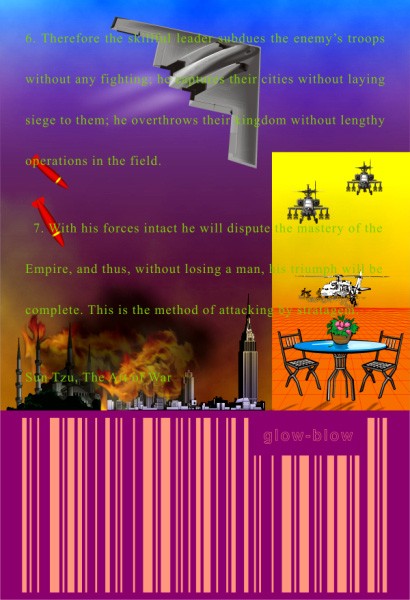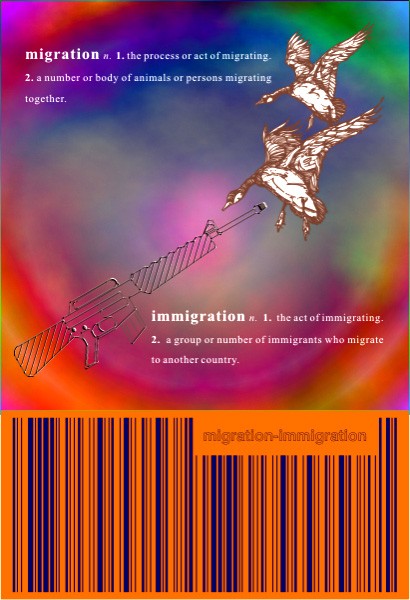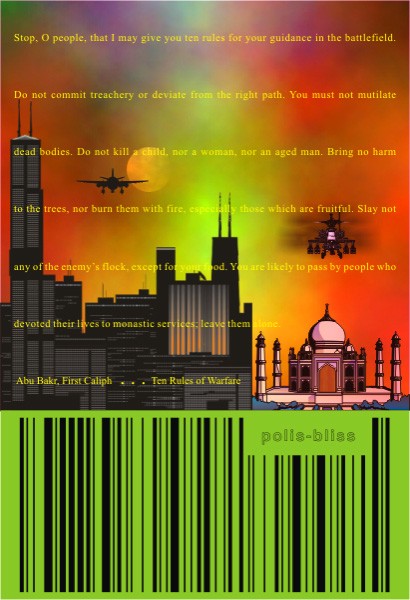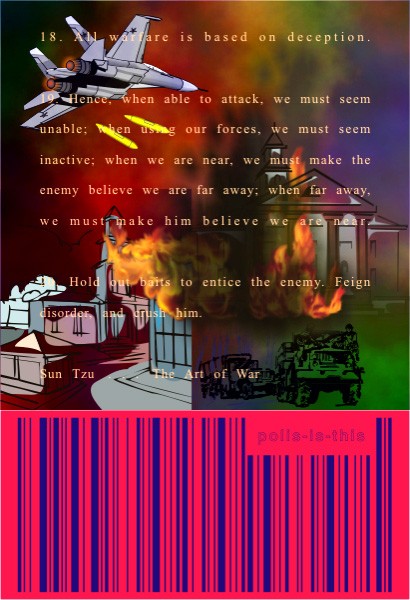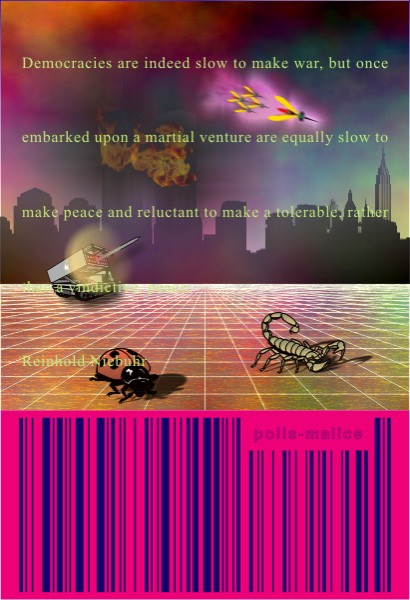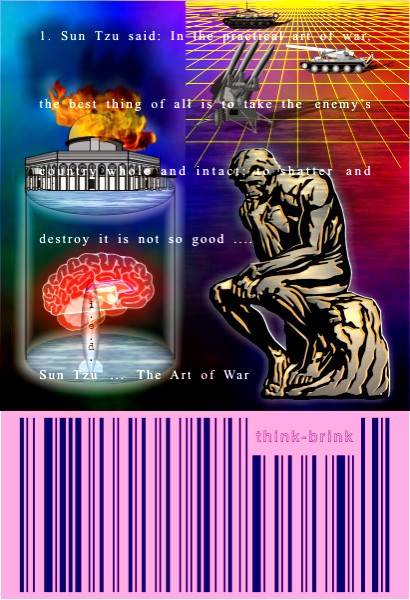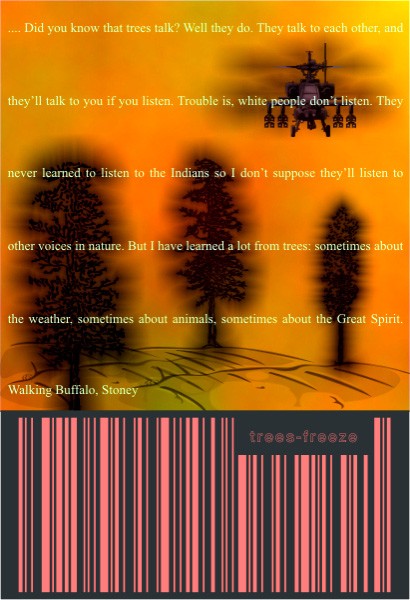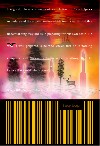Robert Henriquez: Mind Explosive Devices
Portfolio of Digitially Derived Images
By: Robert Henriquez - Feb 27, 2009
Mind Explosive Devices:Envisioning the Ironic Dream of War as Political Myth in the Stratagem of Art
"In a culture like ours, long accustomed to splitting and dividing all things as a means of control, it is sometimes a bit of a shock to be reminded that, in operational and practical fact, the medium is the message." – Understanding Media: The Extensions of Man, Marshal McLuhan, 1964
Introduction
As far as conceptual art goes, my "Mind Explosive Devices" series seems easily accessible to unpremeditated viewings. At first glance, the varied and mostly disparate iconography does not require excessive brain power to be suddenly seen and taken at face value. Not a single image or word is difficult or pretentious, yet there is much that requires a deeper look. The more penetrating gaze, while parsing the semiotics of the ancient texts I selected, may also realize that my choice of images envisions a nexus between "medium" (concept, innovation), and "message" (change, effect). This 'nexus' becomes the focal point from which social, political and cultural causes are visualized. Comparatively, by distilling the essence of this equation, I hope to reveal a disturbing and visceral work borne out by Marshal McLuhan's notoriously tricky paradox "the medium is the message." In my pictures it is celebrated as a process of psychic transformation and change. In other words, art is a transformative 'medium' that can bring about actionable change in human affairs, therefore may be characterized as an effectual message.
My imageries are devices that can be pleasing and jolting all at once. Similarly, the social and political commentaries they confer and convey may be agreeable and disagreeable. Implicit in this contradictory state is a sense of time, a palimpsestic time that anticipates a moment of pause for the viewer when significant 'signs' are not readily penetrable. This moment of time is optional but crucial for a deeper viewing that consists of an interrogation and interpretation of my images.
For now, I take my moment of pause to trace the entire arc of viewing my own art by stepping in the shoes of "Joe the Viewer," entering the palimpsest looking, reading and scanning layers of pictorial information.
The following are my views and ocular testimony.
"In conceptual art the idea or concept is the most important aspect of the work. When an artist uses a conceptual form of art, it means that all of the planning and decisions are made beforehand and the execution is a perfunctory affair. The idea becomes a machine that makes the art." – Sol LeWitt, Paragraphs on Conceptual Art, Artforum, June 1967
Anatomy of a Concept
This new work is a child of my not-so-better-nature, and I engage it with the realization that I may be seen as a social irritant, a calling I embrace with fondness. The work comes at a time of great delusions in a world of bombarded and fragmented ideologies, broken alliances, and uncertain prospects. This is a fertile time for artists who wish to engage in passive-aggressive behavior. It is time to challenge the old grand narrative of a 'new world order' and ponder the possibility that all is not well in the geopolitical sphere. As an artist living in this prevailing chaos, I repel enmity and anger, opt for thoughtful dissent and anticipate a newly invigorated liberalism for what, in time, may evolve into a newer world order.
'To inveigh or not to inveigh': that is the question. Is it radical in socially engaged art to sacrifice the aesthetic for the sake of social change, or are carefully calculated situations that fuse political reality with highly crafted artifice more consistent with a praxis of visual politics? The answer lies in a visual practice of passive-aggressive engagement, with its contradictory layers of meaning and interpretation, creating a deeper, multifaceted work. In other words, I act on the desire to be thoughtful and clever, rather than according to some lofty ethical or moral context.
This stance, at once artistic and political, allows me to realize a visual articulation of sublimating grave real world spectacles into explosive digital images. The idea is to unleash a full retinal, visceral and intellectual assault upon viewing them. These images, reified as art objects, subsume real life drama for content and visual effect. In this sense, sublimation of the real implies an impulse to lure spectators to focus on more radical situations filled with enough contradictory elegance and visual aggression to keep art ahead of the political media hype. The visual power of my "Mind Explosive Devices" series lies partly in identifying themes that give a strong compositional cohesion to the picture, while holding incompatible things together without resolution to a greater whole. Both strategies are necessary, and show an ironic manipulation of the real.
This situation is a good place to trace a post-ironic impulse in art, going back to a time frame between fateful 9/11 and the onset of the Obama-Hope-for-Change zeitgeist, when irony was pronounced dead—(long live irony!) What political cataclysm could have been the cause of irony's demise? Could it be that irony's remains are solemnly interred at Ground Zero beside fear and hope? Ironically, hope impugns the putative power of irony, and irony has the power to turn fear into play—albeit serious and disturbing play intended to debunk the fiction of its death. Irony is feline-like with nine lives, or like the mythic phoenix often rises from the ashes of doubt to give us levity. Irony may be farcical, unapologetic and contradictory, never metaphysical. Irony lives forever, for it is the 'élan vital' that transforms everyday doom and gloom into incandescent, if not convincingly explosive possibilities that I intend to manipulate in a conceptual form of art.
My choice of ironic engagement addresses the paradigmatic conditions of war as fierce and malevolent, as they illicit the combative and destructive passions that drive societies of men to libidinal end ... war of ideas ... war of words ... culture war ... economic war ... gender war ... media war ... race war ... war between nations or groups within nations ... green war, between man and nature—as a case in point, the paper press coverage of war increases the killing of trees. War is sexy. War is seductive. War is an aphrodisiac. War is coital nihilism. War is virtualized and made telegenic for reverent worship and identification. War is political theater, Grand Guignol sound bites on the evening news. War is foul play, therefore ironic. The war paradigm is an effort to build a political myth faithful to the 'secular-religious' traditions of western politics, including the conventional politics of globalization, and capitalism.
Conceptually, my "Mind Explosive Devices" series is an attempt to build an ironic visual construct faithful to the ideas of 'Situationist International', as a radical avant-garde artistic (and political) movement that engaged in the creation of radical situations aimed to upset the establishment. My own rules of engagement, and my brand of 'situational irony'—the situations I set out to create—perhaps more faithful to blasphemy than agitprop, do not simply mock conventions. I act to play, and I play to blaspheme. My blasphemy (not the religious kind) by its own nature is very serious play. It is an artistic stratagem that envisions a pictorial realignment of political memes to expose and shatter jingoistic myths, to throw light on the fiendish dynamics of propaganda and offer a counter language of nuance and doubt. Within that is an ironic political myth faithful to the adversarial discourse of bellicose globalization (death) vs. radical globalism (life) in the ironic dream of war. This blasphemy is tricky; it compels me to forge aesthetics out of an apocalyptic telos—in other words a final posture or purpose that requires a balance between respect and rebellion, kitsch and profundity, humour and serious play.
I choose to play in the social sphere—the locus of power for the avant-garde—to assume an artistic position of secularity within a welter of pictorial traditions, reverent orthodoxies and media-soaked ideologies. Working in this arena ensures that my visual communications are readily accessible, increasing their ability to force people to focus on the relationship between media, politics, ideology, art and social change. Pictures and words with various degrees of cultural respectability are part of a personal calculus in my work; therefore thinking, texting, painting, drawing and photo simulating are similar endeavors in my stratagem of art.
Anatomy of the Picture Plane
Contemporary art is full of ideas and trends that crank the cogs of creativity—mine is to envision an ironic dream of war in which the boundary between political myth and social reality is an optical illusion. My optics regarding the picture plane is not the digital unspooling of any pictorial narrative or composition. Instead, martial iconographies evident in my work are designed to jolt the cerebral cortex into a cogitatively electric state, taking somber geopolitical chaos to luminous, painterly bright and ominously moody visuals—a formula for bittersweet eye candy.
These visuals are like photoluminous signposts populating the picture plane, guiding the viewer's gaze through a virtual codex of words and images that envision a hybrid of reality and fiction distinct from media imagery. While being framed within a personal style, my pictorial vocabulary shares certain common views with more established artistic movements and contexts. Referring to the works of Barbara Kruger, Ashley Bickerton, Victor Burgin, Andy Warhol, Peter Halley and similar visual locutions, my picture plane focuses on the ironic nature of representation. Here, representation is an abstraction of the real.
Fighting jet aircrafts, attack helicopters, missiles and all sorts of high-tech weaponry are mined to convey a bellicose iconography —other depictions of environmental destruction suggest the dire consequences of such aggression. I present these objects in their drawing form as they would appear in the popular context of advertising or comic books. Media coverage of the varied and disparate wars being fought throughout the world renders the horrors of war mundane. I want to give this mundane view its aesthetic due. The bittersweet eye candy is filled with a potent elixir brewed from a mélange of high and low art sensibilities, and media factoid. I serve it in hyper-chromatic vividness of high-keyed colors akin to the retinal ferocity of Op Art. The associate field of barcodes registers this approach literally.
My fascination with barcode symbology goes far back. The totemic representation of barcodes in the picture plane has always been aggrandized as a leitmotif in all my artworks. Barcodes have achieved super iconic status by the sheer power of their ubiquity. They are linear erections that map out significant data information. Barcodes represent the 'optics' and 'semiotics' of commerce, and constitute the de facto language of control in consumerist culture. While their ubiquity gave them familiarity and universality, I give them aesthetic presence and ambiguity. The barcode iconography is "the looking glass" at the centre of my ironic cause—my nonsensical blasphemy—and I ponder what unmeaningness lurks behind those bars...
Only the Jabberwock knows. Ah! The essence of serious play...
My barcodes are real and scannable. They are designed to look like a signature motif or trademark in a Warholian visual sense, thus taking on the same value as those barcodes affixed on everyday products. My use of a real life commodity as an ironic expression of art is reflected in the way I present the image. I made it necessary and true as a discrete field of interacting colors that suggests the pulsating beat of a binary metronome, like a visual metaphor that harks back to the hard edge art of the 1960's. It is also a feast for the eyes, a safe place where the viewer's gaze may rest on something familiar—especially if the other images are so much more disturbing.
The End Game
Finally, I reached the end of the game. Having completed the arc of viewing, I gaze no more. Fire and brimstone, war and destruction are now links in a long chain of memories. I gaze no more, walking about, thinking about life and other distractions.
About the artist
Robert M. Henriquez is an Art Director and Multi Media Artist. He has also worked as a Field Producer/Director on documentaries and TV commercials, and currently functions as Creative Consultant and Art Director for Digital & Print Media for PBandJ Partners, Inc.
Robert has served on the Board of and was Artist-In-Residence at the Contemporary Artist Center in Pittsfield, Massachusetts.
He has worked in production for the CBS Television Network in various capacities: CBS Network—Associate Producer for live broadcasts and Senior Production Manager in the Cultural & Religious Unit (1990-1986); Broadcast Operations Manager, News (1986-1984); Manager of Program Development and Production, WCBS-TV Programming (1986-1983); Program Costs Manager, WCBS-TV Planning and Administration (1983-1980); Studio Manager, CBS Network Operations (1980-1974); and various financial CBS Network departments (1974-1968).
Robert's training includes: certificates from the CBS Management Advance Training for Broadcast Media Operations (both director and assistant director for live broadcast) and from the Tisch School for The Arts, New York University Continuing Education in Film Production and Theory; Theater Studies, Continuing Education, The New School University; and a degree in Fine Art, Centre d'Art, Haiti, his place of birth.

